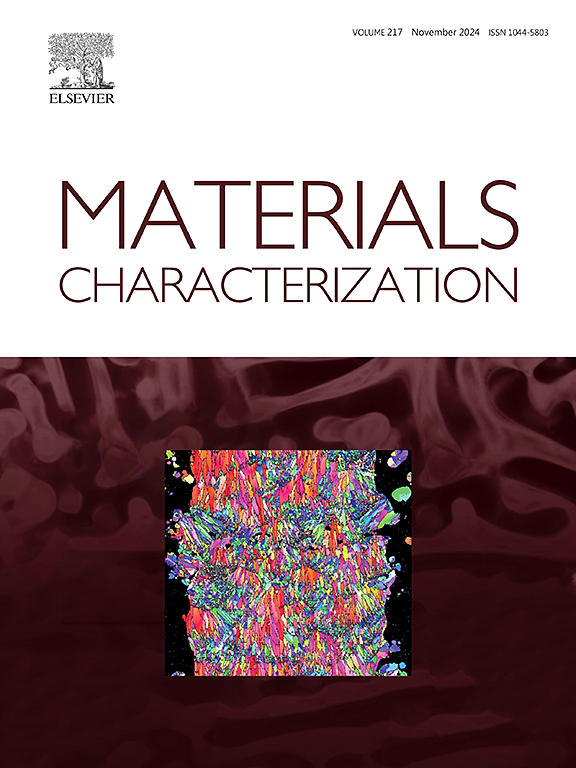Quasi-in-situ EBSD study on tensile twinning activity caused by dynamic loading for extrusion-shear ZCW610 alloy
IF 4.8
2区 材料科学
Q1 MATERIALS SCIENCE, CHARACTERIZATION & TESTING
引用次数: 0
Abstract
In this work, the twinning behavior of extruded ZCW610 alloy at room temperature was investigated during dynamic compression along extrusion direction (ED) by quasi-in-situ electron backscattering diffraction (EBSD). Statistics found that tensile twins are mainly formed and the volume fraction of twins tends to increase with increasing strain. The nucleation and growth of twins often occur at 3.5 % and 6.5 % strains in the early stages of deformation. The quasi-in-situ EBSD studies shown that most tensile twins formation are comply with Schmid's law. A large number of the “paratactic” and same orientation tensile twinning formed in single grain during dynamic compression are initiated by the same twin variants with highest Schmid factor (SF). Meanwhile, multiple “paratactic” or “non-paratactic” twins with different orientation occurred within some grain are general adjacent twin variants with high SF. Especially, the selection of twin variants with low SF is not comply with Schmid's law, which related to the strain compatibility factor (m’) in order to release local stress during dynamic loading. The study also showed that twinning generated by strain compatibility factors is prone to forming twin pairs or twin chains in the neighboring grains to accommodate the plastic deformation.
求助全文
约1分钟内获得全文
求助全文
来源期刊

Materials Characterization
工程技术-材料科学:表征与测试
CiteScore
7.60
自引率
8.50%
发文量
746
审稿时长
36 days
期刊介绍:
Materials Characterization features original articles and state-of-the-art reviews on theoretical and practical aspects of the structure and behaviour of materials.
The Journal focuses on all characterization techniques, including all forms of microscopy (light, electron, acoustic, etc.,) and analysis (especially microanalysis and surface analytical techniques). Developments in both this wide range of techniques and their application to the quantification of the microstructure of materials are essential facets of the Journal.
The Journal provides the Materials Scientist/Engineer with up-to-date information on many types of materials with an underlying theme of explaining the behavior of materials using novel approaches. Materials covered by the journal include:
Metals & Alloys
Ceramics
Nanomaterials
Biomedical materials
Optical materials
Composites
Natural Materials.
 求助内容:
求助内容: 应助结果提醒方式:
应助结果提醒方式:


